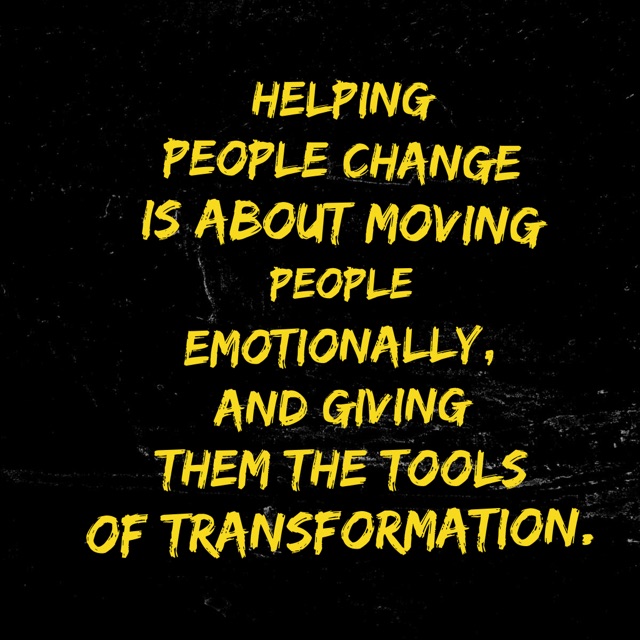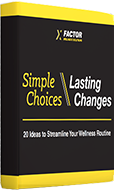The Lunch & Learn Makeover: 6 Steps to Better Presentations
Every company that teaches wellness through lunch and learn programs can become more effective by making a few simple shifts in the style of their programming. Compare these wellness topics:
- The Long Term Benefits of Maintaining a Healthy Weight
- How to Save Time, Get Fit, and Win at Life!
It’s not difficult to guess which lunch & learn might gain more traction with employees. The second topic appeals to the emotions and the “here and now” benefits of healthy behaviors.
 The Wellness Program Dilemma
The Wellness Program Dilemma
While companies are eager to teach information that has the potential to move the needle on measurable outcomes (such as BMI, blood pressure, or diabetes, for example) the actual results of such programs are disappointing. According to the 2013 “Workplace Wellness Programs Study” employers are struggling to get people in the door of their wellness programs, and are having an even harder time keeping them there. Most organizations have a participation rate of less than 20%.
If you are responsible for your wellness program, what do you do? How do you meet employees where they are and deliver health information that has real value? The most simple entry point for many companies is the good old-fashioned lunch and learn. It is inexpensive (in terms of money and time) and is easy to implement. The key to success, however, is to use the program to inspire healthy behaviors and pave the way to create a mini health and fitness movement in the workplace, rather than just offering another information dump.
How We Decided to Become Part of the Solution
OK, I will admit that this topic is rooted in our personal experience. We have been health educators for years and have been guilty of offering endless statistics about everything from health risk factors to micronutrient ratios. Yes, we gave boring presentations!
What changed our minds? Recently we attended a lecture on container homes, which we think are pretty cool. (Here are some interesting pictures on Pinterest.) We had given up an evening during a very busy week, just because we thought it would be interesting. The presenters discussed the mechanics of insulation, placement, R-values, etc. They completely failed to capture our imagination or inspire us to action. We left the meeting feeling disappointed and frustrated that we had wasted our time. Then it hit us. This is exactly what we had been doing in our lunch and learn talks. It was time to give our presentations a makeover.
We reimagined our topics like TED Talks with a health and wellness spin. We wanted to inspire our audience, speak in a compelling way, and provide calls to action that could spark a “mini-movement” in a company. We started studying the elements of good presentations and listening to great speakers.
The topics are essentially the same – sit less, move more, eat more greens, eat fewer French fries. The key was in the delivery and the approach. In the process of revamping our presentations, we discovered six key components to a better lunch and learn. (See Laura Putnam’s Workplace Wellness That Works, 2015.)
Six Simple Tips to Build a Better Lunch & Learn
1. Create an emotional experience. It's much more powerful to open with an emotional hook - a story, a video clip, even a movement-based or interactive activity - that builds empathy and emotional engagement.
2. Less is more. The goal of a lunch and learn presentation is to inspire people to take action. The point is not to deliver a boring health lesson, with lots of frightening facts and statistics. If there is too much data, the presenter will lose their audience.
3. Issue a call to act. It’s surprising how long it takes for a speaker (especially health educators) to get to the point. This type of presentation is the perfect opportunity for a speaker to wallow in information overload. The call to action should be issued right up front in a language that inspires action, and repeated often throughout the presentation. It’s important to encourage and empower participants,
4. Encourage social activism. It’s helpful when titles of presentations are something like “Stand Up for Healthy Eating – Become and Agent of Change!” Participants need to know that their personal choices are actually not so personal. For some people, investing in their health and well-being feels selfish. In reality, it’s just the opposite. Behaviors have a tendency to spread through social networks, so every time we make a positive choice, we’re positively influencing the choices of friends, family and coworkers.
5. Give them something to do. Less information means more time for interaction. If the presentation is intended to generate behavior change, there must be more opportunities for participants to make sense of the material on their own terms. This means less lecturing and more doing. A good lunch and learn will provide time for participants to draw from their own experiences and knowledge base through small group work or individual discovery exercises.
6. Coaching is key. A good speaker will have the ability to step out of the role of expert. They will facilitate a learning process rather than merely deliver information, but will also create emotional hooks to motivate and inspire. This means that the presenter will ask a lot of questions and help the group learn from each other in addition to the material at hand.

A Solid Foundation with a New Twist
At X Factor we are firmly rooted in science and evidence based information. We follow the latest studies and are committed to offering people the best health, fitness and wellness opinions from experts in the field. None of that matters, however, if our clients, students, and audiences are bored and fail to engage with the material. That’s on us.
Helping people change is not just about delivering information and demonstrating expertise. It’s about moving people and giving them the tools to transform their lives. While it’s important to understand the research and best practices related to health, it’s more important to encourage people to take action on those simple, daily behaviors that can lead to real change.
(If you would like to find out more about wellness presentations for your workplace or organization, please give us a call. We would love to speak with you. Carol Nave: 713.443.6922 or Matt Trudo: 713.572.7262)
Question: What talk or presentation has inspired you to make a change or take action?
Latest X Factor post
Is your body saying you're old, but your mind isn't willing to give in? If you've ever felt discouraged by the challenges of health & fitness after 40, we've got a few tips, and a toolbox to help.
View BlogReceive "20 Ideas to Streamline Your Wellness Routine."
 Sign up for our "Weekly Wellness Tip" and get your free report "Simple Choices, Lasting Changes: 20 Ideas to Streamline Your Wellness Routine." The report gives you simple, smart ideas that can help you feel better and be more productive during your work day.
Sign up for our "Weekly Wellness Tip" and get your free report "Simple Choices, Lasting Changes: 20 Ideas to Streamline Your Wellness Routine." The report gives you simple, smart ideas that can help you feel better and be more productive during your work day.

Leave a Comment
Comments (0)